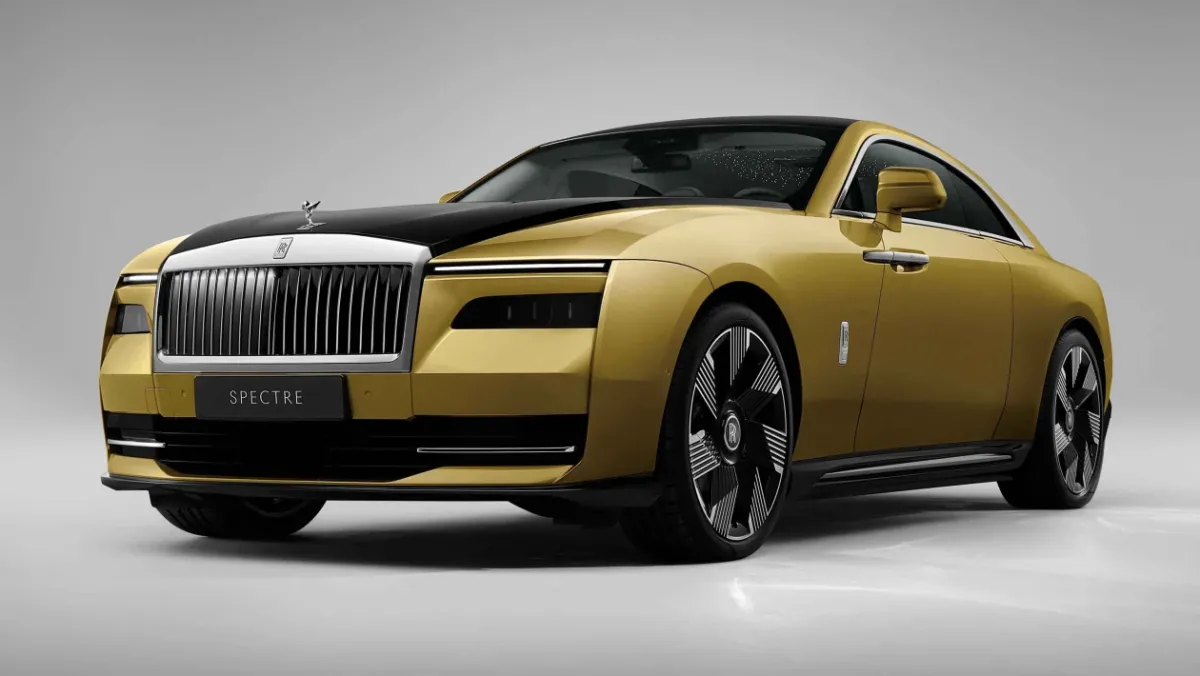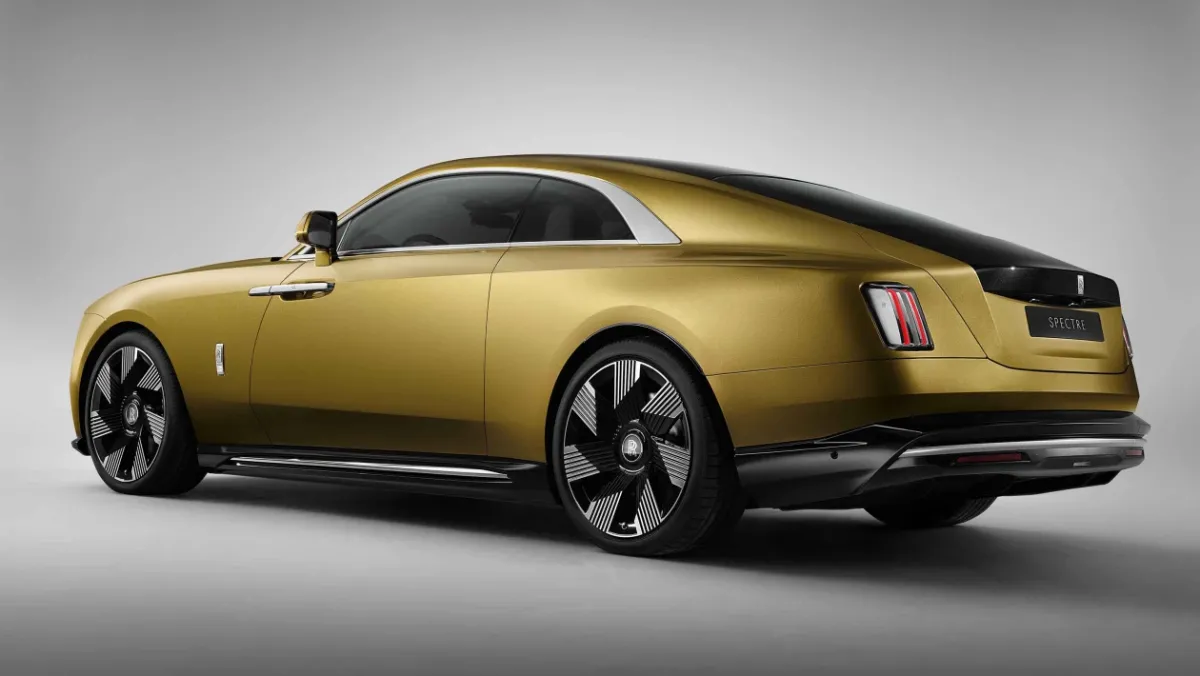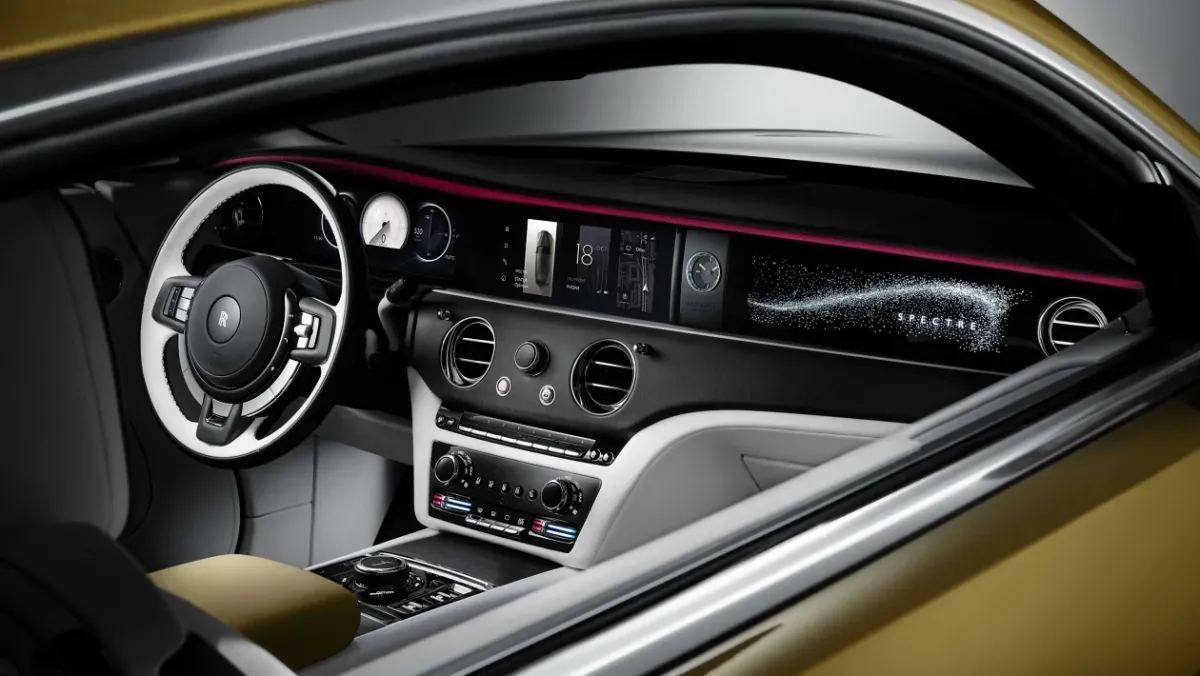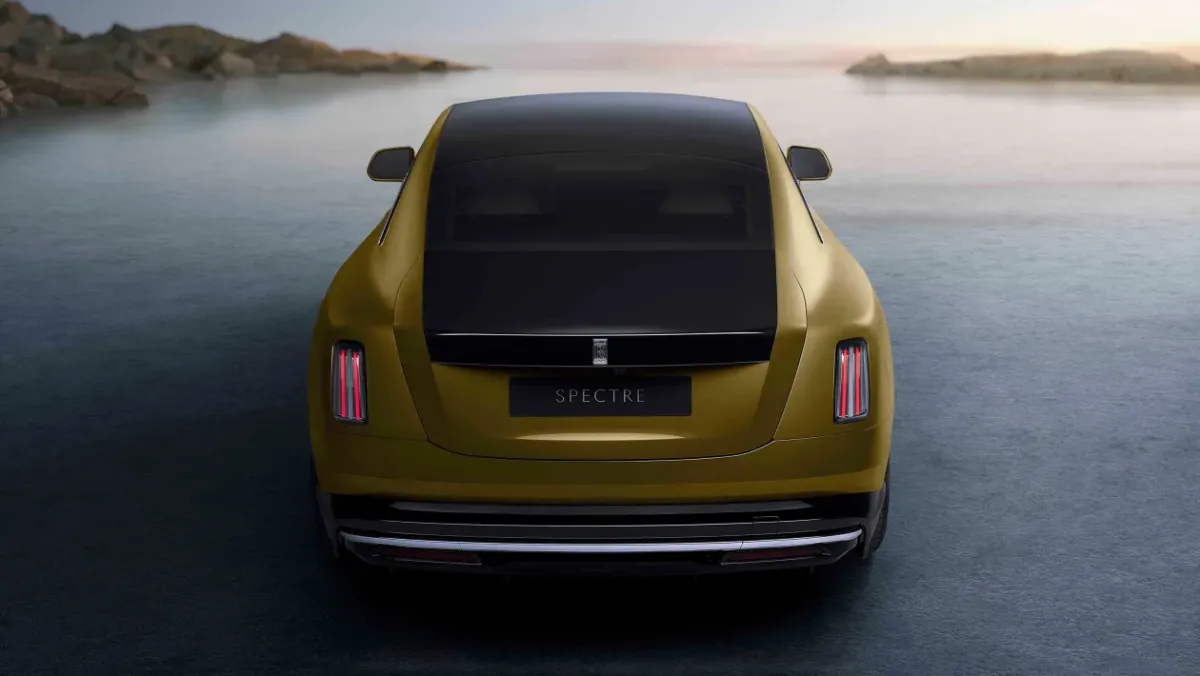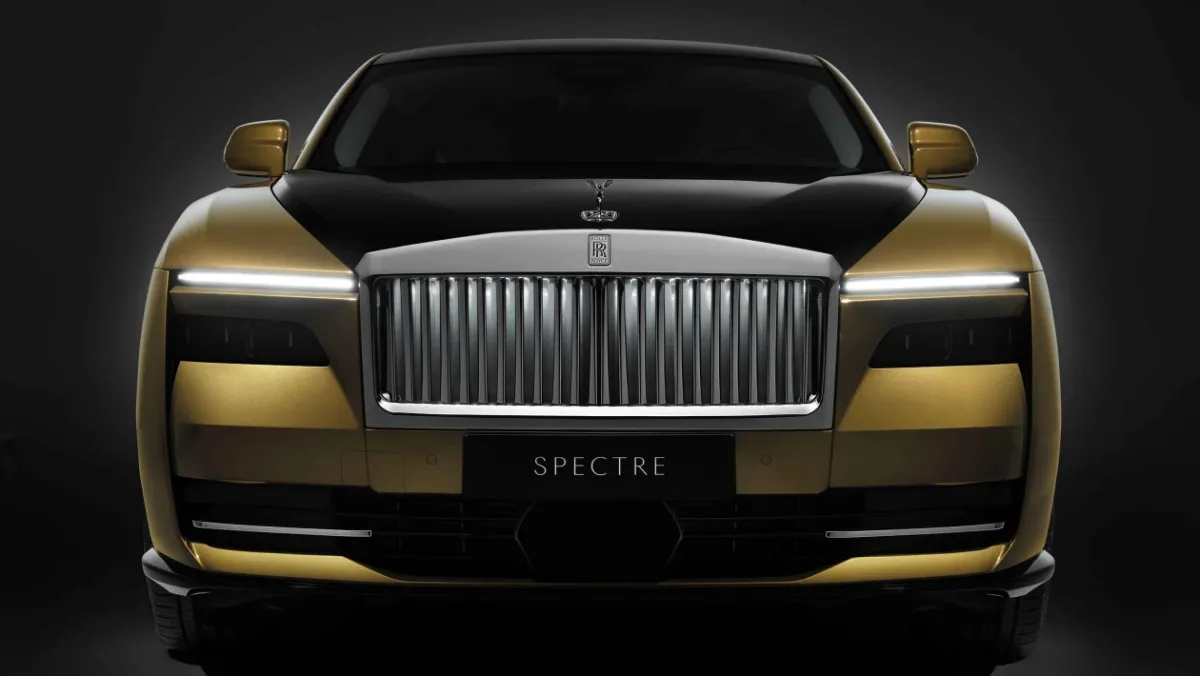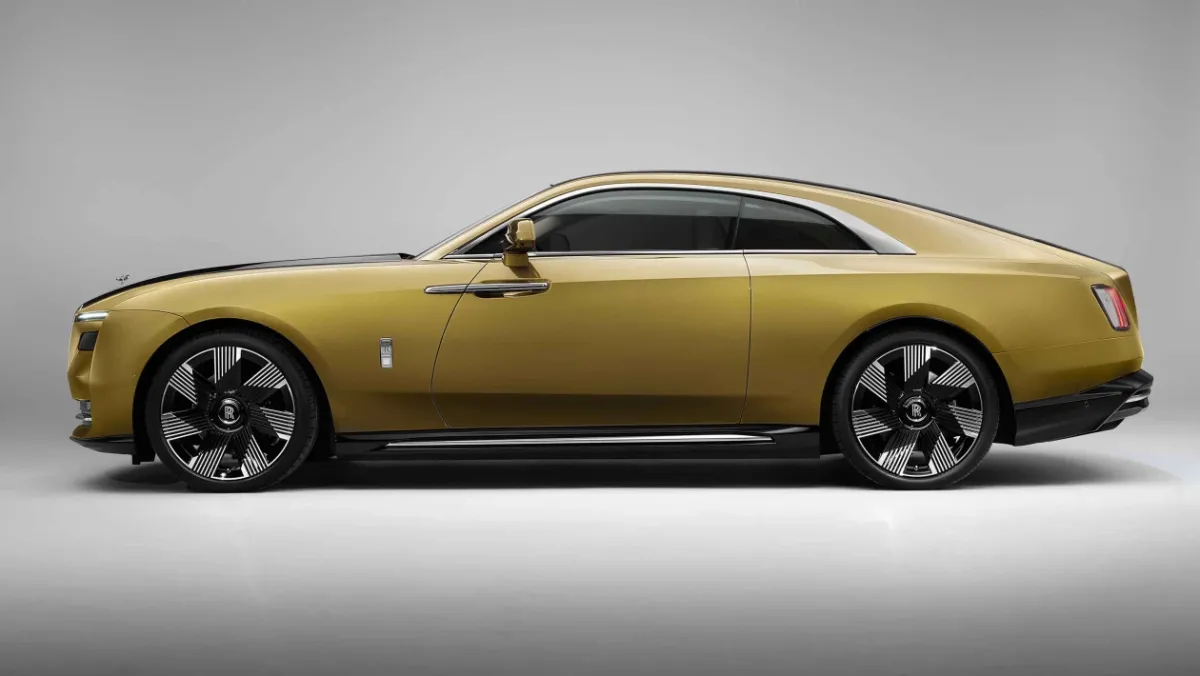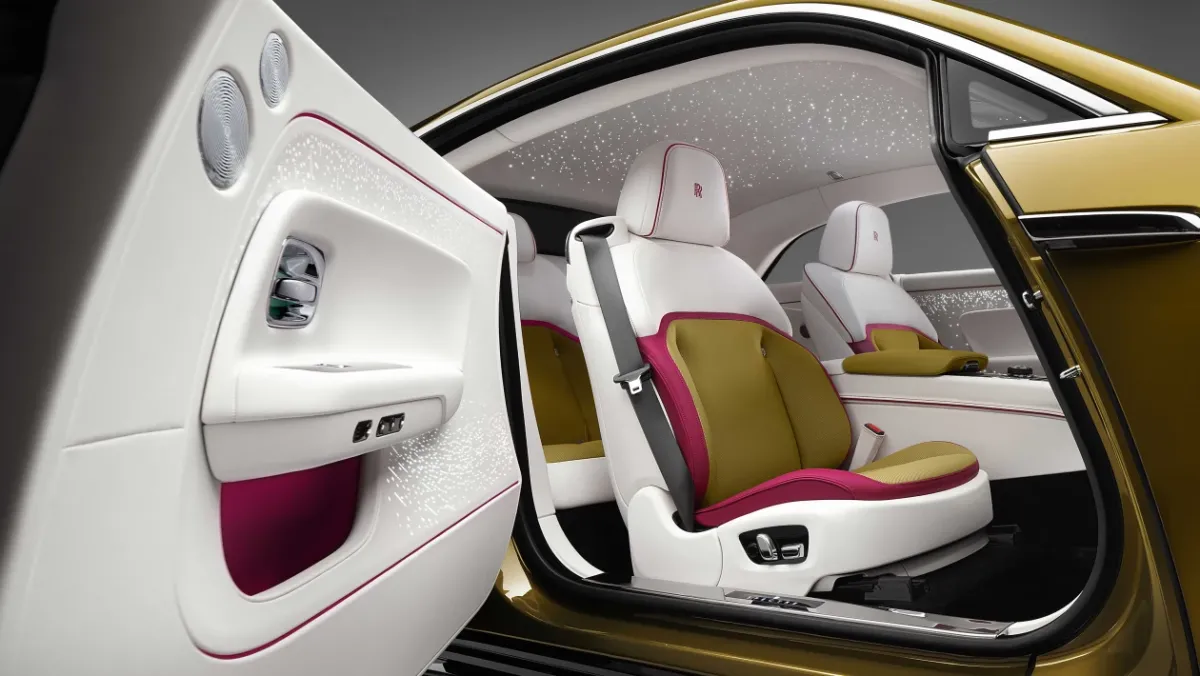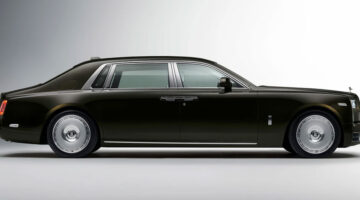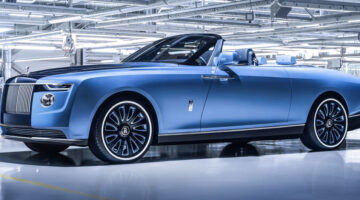The Spectre is Rolls-Royce’s very first all-electric model, and spells the beginning of the end for its combustion-powered lineup
With its lengthy development programme now in its final stages, the Rolls-Royce Spectre has been unveiled. The all-new, all-electric four-seater coupe is the firm’s very first EV and it marks the beginning of Rolls-Royce’s transition to a pure electric lineup by 2030. The brand’s combustion-powered models are set to be built alongside Spectre until that date.
The Spectre’s final phase of testing is set to conclude in Q2 of 2023, before first customer cars hit the road in Q4. Pricing is set to fall between Cullinan and Phantom models, so don’t expect much change from $340,000.
Though its design bears similarities to the Wraith, Rolls-Royce has taken inspiration from the Spectre’s spiritual successor, the Phantom Coupe. Its new split headlight design has been carried across, with its unique tapered rear a clear nod to the one-off Boat Tail revealed in 2021. That trademark Pantheon grille remains, but is the widest of any model in this new form – an array of 22 LEDs are also incorporated to illuminate each of the vanes.
23-inch wheels and clear taillights are new to the Spectre, with the Spirit of Ecstasy and Pantheon grille both tuned for aerodynamics for improved efficiency. Rolls-Royce claims a drag coefficient of 0.25cd, the best of any of its models, but some way from the 0.2 figure of luxury EV leaders, the Mercedes-Benz EQS and Lucid Air.
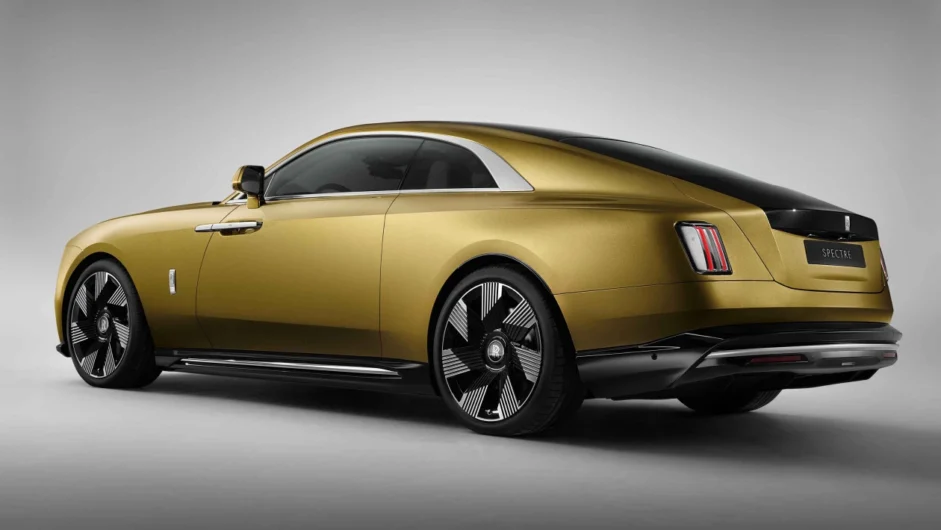
Under its slippery new skin is a bespoke aluminium space frame chassis, with the powertrain derived from that found at the core of the new BMW i7. Thanks to integration of the battery into the structure and the use of technical extruded aluminium sections, the Spectre is 30 per cent stiffer than any previous Rolls-Royce. With wiring and climate control piping neatly routed through a channel between the battery and floor, the Spectre has a perfectly smooth underbody, with added benefits being a lower seating position and improved sound deadening.
With the test programme yet to conclude, Rolls-Royce hasn’t disclosed final performance figures, but the Spectre is expected to cover 515 kilometers (WLTP) on a single charge, a chunk below the quoted 625-kilometer figure of the BMW i7 but an improvement on the 485-kilometer maximum of the Porsche Taycan. Output is rated at 569bhp and 664lb ft of torque, somewhat modest considering its eye-watering 2975kg kerb weight (700kg of which being the battery) – 0-100kph happens in 4.5sec.
Carried across from the new-generation Ghost is Rolls-Royce’s Planar suspension system, combining software and hardware for improved ride quality. The system has the ability to entirely decouple anti-roll bars on straight sections to allow each wheel to move independently over undulations for a more refined ride. When a corner is identified, anti-roll bars are recoupled and dampers stiffened, with a total of 18 sensors monitoring and adjusting the four-wheel steering system, braking, power delivery and suspension to ensure the best ride quality possible.
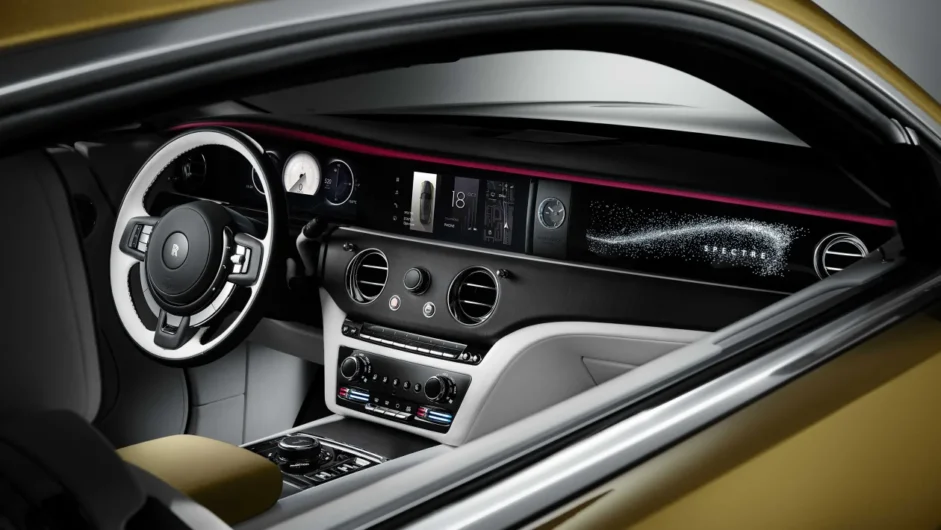
In addition to the trademark Starlight headliner and Illuminated fascia first featured on the Phantom VIII, the Rolls-Royce Spectre features new Starlight Doors. As with the rest of the car, its new seats have been designed with customisation in mind, with interior elements such as the door cards available with optional wood Canadel Panelling. The Spectre’s infotainment system has also seen a complete overhaul, with the new SPIRIT system allowing for new remote functions.
Development of the Rolls-Royce Spectre will conclude in Q2 next year before first customer deliveries commence in Q4 2023. Expect prices to start from around $340,000.
This article originally appeared at evo.co.uk
Copyright © evo UK, Autovia Publishing

